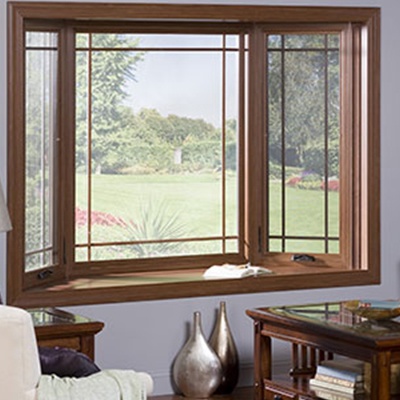Condensation is a sure sign that your home windows have to be replaced.
Windows are a crucial barrier between the harsh, variable weather conditions outside as well as our calmness, constant home temperatures. Home replacement windows quite often have a fifteen to twenty-year life expectancy, so thankfully we don't need to think of replacing them too often. Yet understanding when it's time to replace them can be complicated. You could be tempted to try and hold out for another season if you notice the warning signs. But replacing your home windows now could assist you extend the life of your entire house and maintain you as well as your family cozy all wintertime long. Here are a couple of indications that your home windows are not prepared for the harsh wintertime this year.
Drafty Home
As home windows age, they start reducing, damaging, and not closing appropriately, permitting air from inside your home to drain. As a result of this, your HVAC system battles to keep your house at a consistent temperature and also sends your energy expenses increasing. If your home is visibly much more breezy or your electrical bills appear to be rising this succumb to no evident reason, you may want to have your home windows had a look at.
Tough to Lock
We enjoy having our windows open when the weather condition behaves, but they shouldn't be open all the moment. Throughout the winter season and when we're not home, your home windows ought to be shut in place and locked. Windows with malfunctioning locks is a major protection danger that should be treated asap to maintain your family members secure. Frequently the lock can be repaired cheaply, however if the home window is having difficulty remaining open or closed or is dripping air, it might be best to merely mount a brand-new one.
Condensation Forming
The biggest indication that you need new windows is when condensation starts to form on the inside of your home window when it is closed and also secured. This is a sign of a likely irreparable defect and also needs to be dealt with immediately to stop the possible development of mold and mildew in the framework, which can spread to various other areas of your home as well as trigger major damage when left unattended.
Have you practically had it with your old, breezy windows?
Is this the year you've determined to lastly change your windows? Replacing your home windows with brand-new ones features lots of benefits, including an energy effectiveness boost, much better ventilation, as well as much better high quality of light in your home. The National Fenestration Rating Council certifies and labels windows (as well as doors and also skylights) on their efficiency and also power effectiveness. When you're purchasing new windows you'll see these ratings on the NFRC tag. In this week's blog site, we'll talk about the best ways to read this tag to make certain you're making an informed decision on your new windows.
Heat Gain and also Loss
The very first 3 homes on the label involve how the home window executes with regard to heat gain and also loss. Windows gain and lose heat in 3 methods:
Straight conduction with the glass.
Radiation of warmth from the sunlight into the house, and also out of the house from objects in your home.
Air leakage with and around the window.
U-factor
This is "The rate at which a home window, door, or skylight performs non-solar warmth circulation." The takeaway below is "The lower the U-factor, the much more energy-efficient the window, door, or skylight."

Solar Heat Gain Coefficient
The SHGC tells us what does it cost? radiation is confessed with the home window as well as released as warm in the home. The lower the number, the much less warm is sent. Nevertheless, this doesn't always mean you desire a low SHGC. For example, since a greater SGHC indicates the window enables much more warm in, you can allow much more solar warm inside in the winter, which might reduce your heating demands. In this instance, the climate you stay in will play a significant consider picking an SHGC rating.
Air Leakage
This quantifies how much air the home window lets in relative to a details pressure distinction across read more it. The lower the rating, the less air leakage.
Sunshine Passage
The next two rankings gauge just how much light a home window lets into your home.
Visible Transmittance (VT).
This number in between 0 as well as 1 procedures what fraction of the range of noticeable light the home window lets through. The greater the portion, the much more light the window will certainly enable. If you intend to use daylighting in your home, you'll want a higher portion. If you wish to lower indoor glare, you could want a lower fraction.
Light-to-Solar Gain.
This number is the ratio between the SHGC and the VT. "The higher the number, the much more light sent without including extreme amounts of heat.".